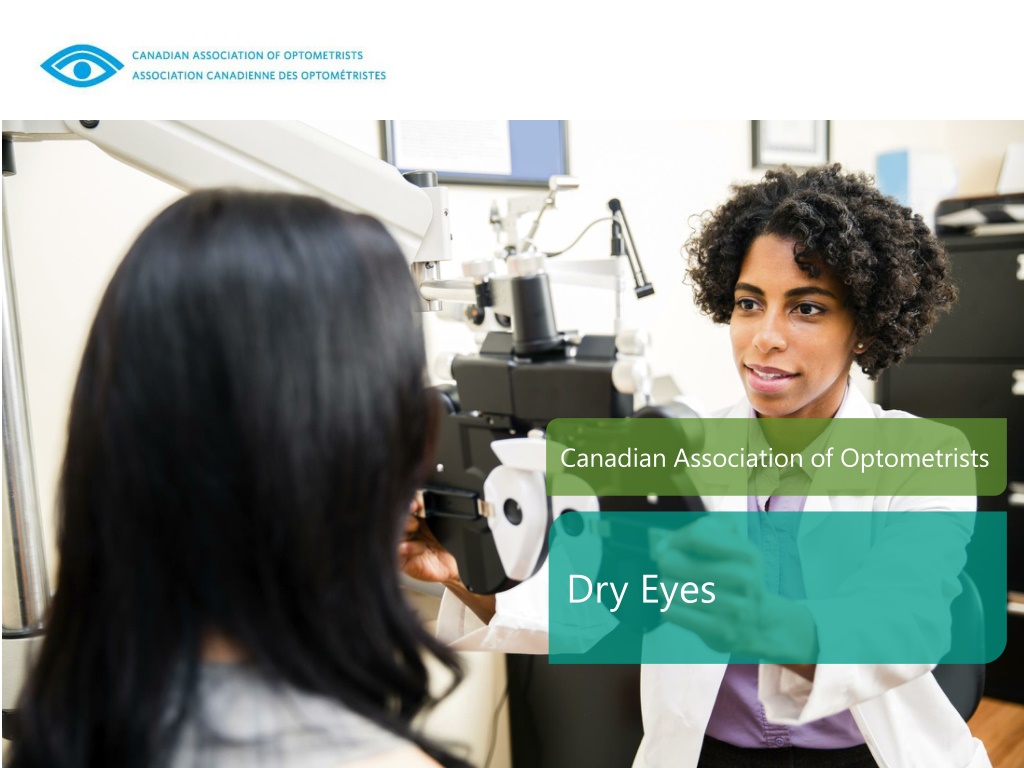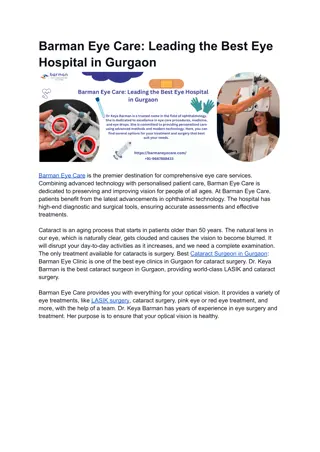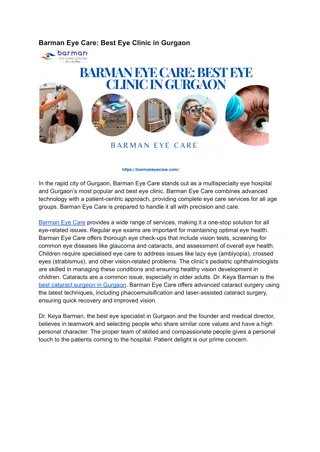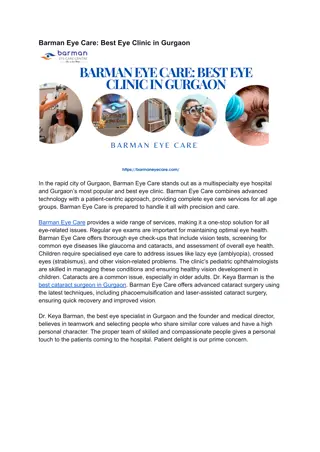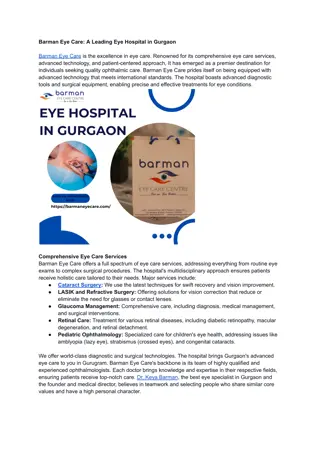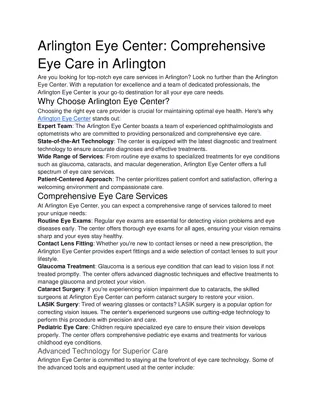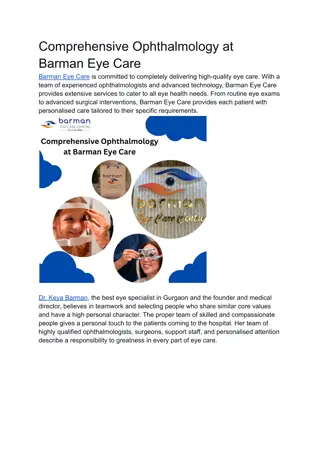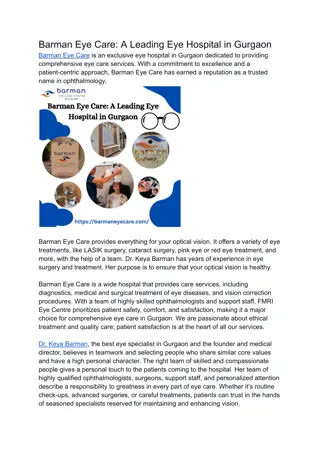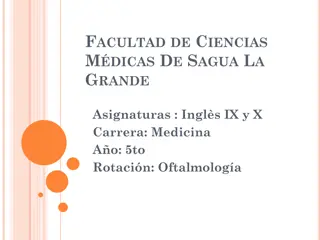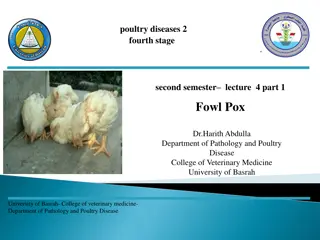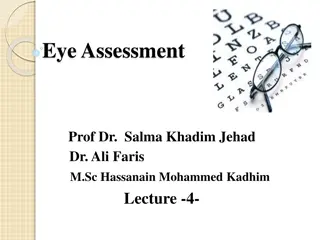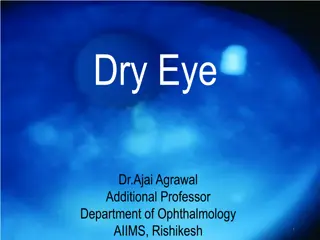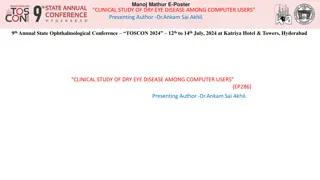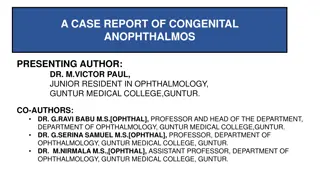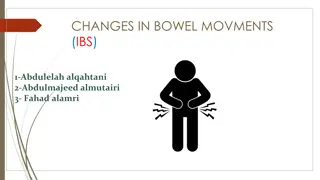Understanding Dry Eye: Causes, Symptoms, and Diagnosis
Dry eye is a common condition that occurs when your eyes do not produce enough tears or produce tears with the improper chemical composition. This can result from various factors such as aging, hormonal changes, medications, and environmental irritants. Symptoms include stinging, gritty sensation, fluctuating vision, and tearing. Diagnosis involves an eye examination by an optometrist to assess tear quality and quantity. While dry eye is usually chronic and cannot be cured, managing symptoms can improve comfort and maintain eye health.
Download Presentation

Please find below an Image/Link to download the presentation.
The content on the website is provided AS IS for your information and personal use only. It may not be sold, licensed, or shared on other websites without obtaining consent from the author. Download presentation by click this link. If you encounter any issues during the download, it is possible that the publisher has removed the file from their server.
E N D
Presentation Transcript
Canadian Association of Optometrists Dry Eyes
What is dry eye? The tears your eyes normally produce are necessary for overall eye health and clear vision. Dry eye occurs when your eyes do not produce enough tears or produce tears that do not have the proper chemical composition.
What causes dry eyes? Dry eye symptoms can result from the normal aging process, hormonal changes, exposure to certain environmental conditions, problems with normal blinking from medications such as antihistamines, oral contraceptives or antidepressants Dry eye can also be symptomatic of general health problems, such as arthritis, or can result from UV exposure and environmental irritants.
What are signs/symptoms of dry eye? The common signs and symptoms of dry eye include: stinging, gritty, scratchy fluctuating vision sometimes having a burning feeling or a feeling of something foreign within the eye Some people experience tearing as a result of dry eye This is a natural reflex of the eyes to create more tears to comfort the eye in response to dryness.
How is dry eye diagnosed? Your OD will ask questions about your general health, your use of medications and your home/work environments to determine any factors which may be causing dry eye symptoms. The use of a slit lamp, in conjunction with special dyes, will allow your OD to evaluate the quality, the amount and the distribution of tears to detect signs of dry eyes.
Can dry eye be cured? Dry eye is usually chronic and cannot be cured, but your comfort can be improved and eye health maintained through use of artificial tears. For more severe dry eye, gels and ointments can be used, especially at bedtime.
Can dry eye be cured? Your OD is the best source to advise on the best drops for you. Treating any underlying systemic disease, or a change of diet to include items such as fish or flax seed oil can also be helpful at times. New prescription medications are now available to help your body produce more of it s own tears.
Will dry eye harm my eyes? If dry eye is left untreated, it can be harmful. Excessive dry eye can damage tissue and possibly scar the sensitive corneal tissues of your eye, impairing vision. Dry eye can make contact lens wear more difficult due to increased irritation and greater chance of eye infection. To keep dry eye symptoms in check, you and your Doctor of Optometry need to work together. Follow your OD s instructions carefully.
